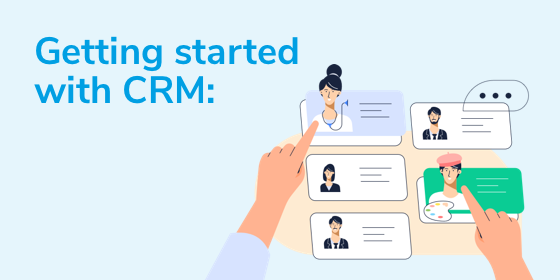ATS vs. CRM – and how not to get lost in those recruiting acronyms

Do I actually need several software tools for the recruiting process?
Which candidates should I keep in my Applicant Tracking System (ATS) and which should I move to a CRM?
Can I use my ATS like a CRM?
Here are some thoughts on when adding a new CRM tool makes sense, plus an explanation of how CRM differs from the functionality most common ATSs offer.
It’s all in the name
An ATS is designed to track progress within the hiring process. It supports the posting of job vacancies, the scheduling of interviews, and receiving feedback. It can also, potentially, support payroll, worktime tracking, contacting management, and much more.
A CRM tool, by contrast, is specifically designed to help recruiters maintain relationships with potential candidates at scale and facilitate the conversion of passive talent into active applicants. A CRM can also help your organization strengthen its employer brand, positioning you as the employer of choice for top professionals.
When a CRM makes sense
You might consider a CRM if you:
- Regularly conduct active sourcing and work with long lists of potential candidates (and want to comply with GDPR by avoiding multiple gigabits of Excel spreadsheets containing candidates’ data)
- Use several recruiting channels simultaneously (LinkedIn, XING, Stack Overflow, etc.)
- Have several people working in your recruiting team (even if they recruit for completely different roles)
- Work on hard to fill or senior roles that take extensive time-to- and cost-per-hire
- Conduct or visit recruiting events (hiring days, trade fairs, university events)
- Explore additional candidate sources like a boomerang (alumni) hiring, silver medalists’ programs, etc.
While ATS systems are designed to deal with active job seekers ready to fill in multiple forms and upload several documents, modern CRM is dedicated to simplifying candidate engagement and ensuring that candidates feel valued even before the hiring process begins.
Passive talent and the candidate journey
By simplifying and enhancing pipelining activities, a good CRM can play a critical role in any recruitment marketing strategy, especially in the era of passive talent, waiting to be approached by the right company at the right time, when the candidate journey becomes key to establishing a strong employer and company brand (LinkedIn Talent Solution Report).
Many ATS providers claim to have CRM functionality and position themselves as a one-stop shop for all recruiting and hiring needs; understandably enough, since software sales are such a competitive business these days.
If, however, you still struggle with scaled and GDPR-compliant candidate data and enter a lot of information manually, if you spend a lot of time fishing for the right candidates or the right talent pools, or if you find yourself sorting CVs and business cards after every recruitment event, it probably makes sense to take a look at a dedicated, CRM solution.
Creativity can be challenging
To be frank, managing CRM requires a much more creative and less “process-driven” approach and that can be challenging. However, you are unlikely to break anything by introducing CRM and can easily change or adjust your strategy. Most common best practices include pipelining for the hardest-to-fill roles, managing university and alumni pools, and staying in touch with the most senior candidates for leadership roles.
Perhaps the most important question is what kind of profiles to maintain within each tool. Plainly, performance really matters in the workplace. A recent study of more than 600,000 people in different occupations found that high performers are 400 percent more productive than average ones*. And it’s no surprise that such candidates are rare and in high demand and may require a lot of cross-team effort to attract. All of this suggests that you should probably be filling your CRM with potential top talent that will thrive in your organization in the future (a 2020 – 2025 timescale) and keep currently active candidates in your ATS. The good news: most CRM providers offer an opportunity to integrate with ATS, which can help connect the dots throughout the candidate journey.
In a nutshell:
- Including a CRM in your HR software ecosystem can add a lot of value if you are proactively recruiting talent using active sourcing methods, recruiting events, or want to tap into different talent pools.
- You might consider a dedicated CRM solution if you find yourself inventing multiple workarounds for engaging with passive talent.
- It makes sense to keep candidates who are currently moving through the hiring process in your ATS and to use CRM for those with high potential, silver medalists, alumni, etc. for potential future hiring.
- Both tools can benefit from integration to avoid the loss of information within the recruitment process.







